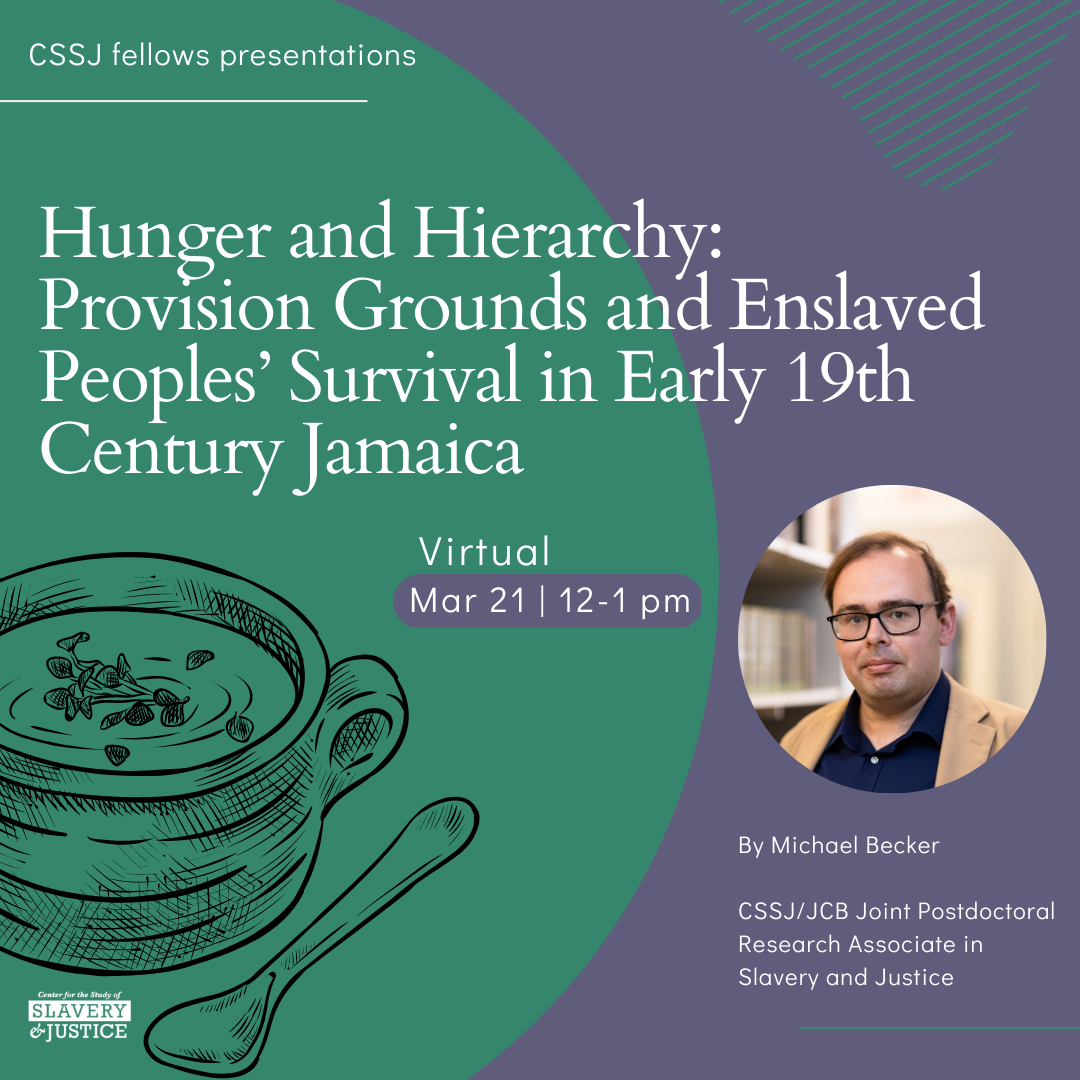Enslaved people in nineteenth century Jamaica were often hungry. Enslavers forced enslaved people to do back-breaking labor in tropical heat, while providing minimal to no nourishment themselves. In most cases, rather, enslaved people were compelled to cultivate their own gardens and provision grounds, growing everything from root vegetables and fruits to herbs and spices. The success of these gardens, conditioned by the space and time enslavers afforded them to cultivate them, the fertility of the soil and the suitability of the weather, and of course a degree of luck, could make a world of difference. So, in March 1800, when Bungy, an enslaved man on Orange Hill Plantation, noticed that his provision grounds had been pillaged, he was alarmed. This paper explores Bungy’s world, and the world of Quashie, an enslaved man claimed by a neighbor, who took coconuts from Bungy’s grounds to avoid starvation. Becker argues that the starvation regime of slavery fueled relations of antagonism and antipathy between enslaved people, exacerbating hierarchies and undermining the possibilities of shared challenges to plantocracy and racial slavery.
Speaker bio:
Michael Becker is a postdoctoral fellow jointly appointed at the Center for the Study of Slavery & Justice and the John Carter Brown Library at Brown University. He is currently working on a book manuscript, Strategies of Survival: Slavery in Jamaica, 1780-1834, which uses deep microhistorical case studies to examine enslaved people’s efforts to survive and navigate day-to-day life. His work has been supported by the AHA, the Fulbright Program, Princeton University Libraries, and several centers at Duke and Brown. He holds a PhD in History from Duke University.

